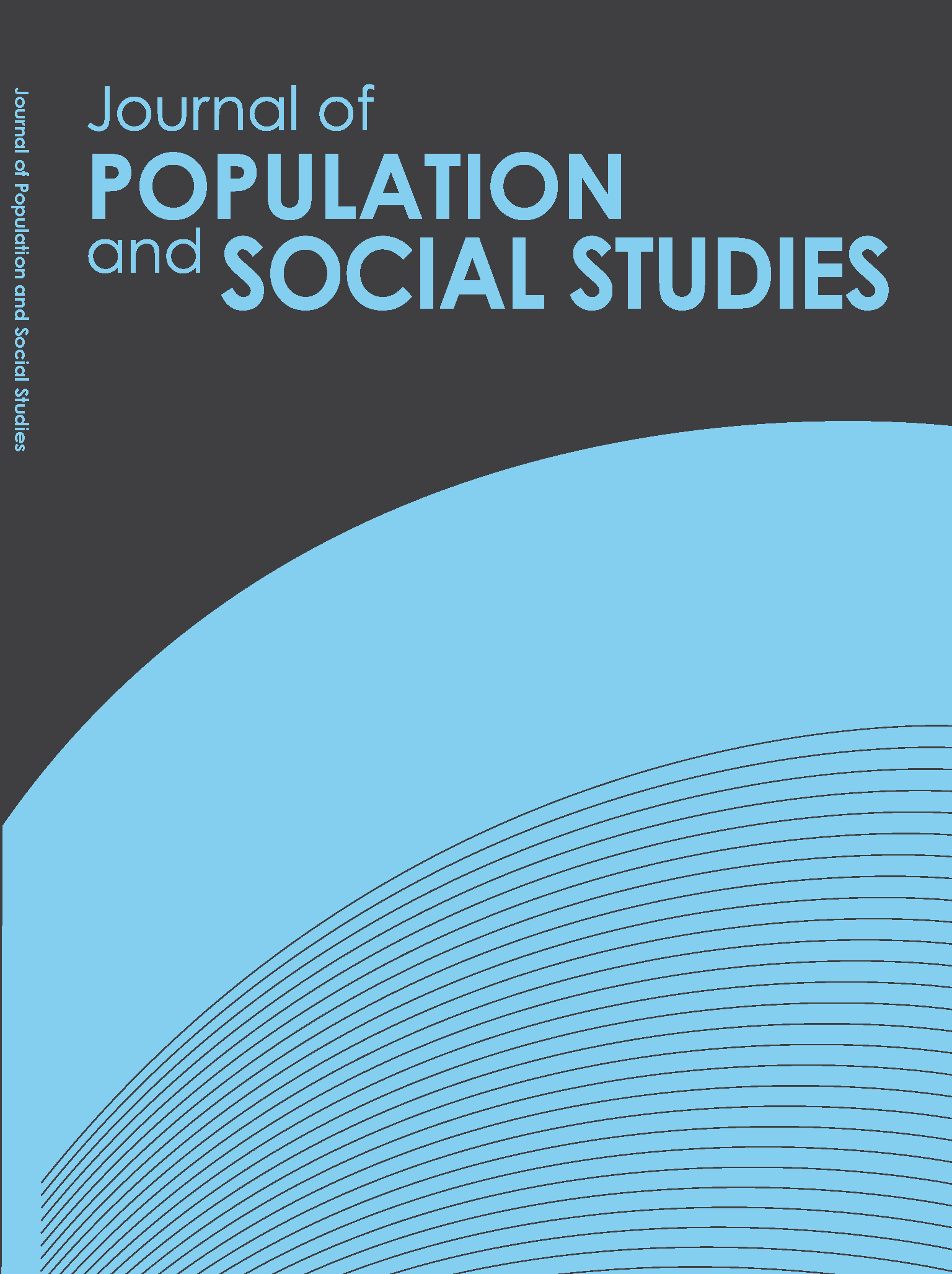Age-Specific Fertility Rate Projections in West Africa
Main Article Content
Abstract
Fertility has become the most important biological factor in predicting population growth due to significant improvements in reducing mortality. Fertility projections are important in predicting the demand for water, food, medical services and other basic social amenities. There are two main objectives in this study: 1) to examine past trends in age-specific fertility rate for West African countries; and 2) to predict future fertility rates there. Age-specific fertility data were retrieved from the United States Census Bureau; then simple linear regression models were fitted to forecast the fertility rates for seven age groups from 2016 to 2100. Results confirm that fertility rates in West Africa have been reducing very slowly as has been reported in other studies, but this examination reveals that few West African countries are likely to reach long-term fertility limits across all age groups due to the slow pace of reduction. This suggests that, current population control programs in most countries are not sufficient in achieving Sustainable Development Goals and policymakers need to consider additional measures to increase the pace of fertility reduction
Article Details
References
• Abel, G.J., Barakat, B., Samir, K.C., & Lutz, W. (2016). Meeting the sustainable development goals leads to lower world population growth. Proceedings of the National Academy of Sciences, 113(50), 14294-14299. doi: https://doi.org/10.1073/pnas.1611386113.
• Alkema, L., Raftery, A.E., Gerland P., Clark S.J., Pelletier F., Buettner T., & Heilig G.K. (2011). Probabilistic projections of the total fertility rate for all countries. Demography, 48(3), 815-839. doi: https://doi.org/10.1007/s13524-011-0040-5.
• Cattin, P. (1980). Estimation of the predictive power of a regression model. Journal of Applied Psychology, 65(4), 407-414. doi: https://doi.org/10.1037//0021-9010.65.4.407.
• Coale, A., & Trussell, J. (1996). The development and use of demographic models. Population Studies. 50(3), 469-484. doi: https://doi.org/10.1080/0032472031000149576.
• Craig, J. (1994). Replacement level fertility and future population growth. Population Trends, (78), 20-22. doi: https://doi.org/10.2307/2060507.
• de Beer, J. (1989). Projecting age-specific fertility rates by using time-series methods. European Journal of Population [Revue européenne de Démographie], 5(4), 315-346. doi: https://doi.org/10.1007/bf01796791.
• Ekane, D. (2013). Fertility trends in sub Saharan Africa. (Unpublished doctoral dissertation). Department of Social Work, Stockholm University. Retrieved from http://urn.kb.se/resolve?urn=urn:nbn:se:su:diva-87305.
• Feyisetan, B.J., & Bankole, A. (2002). Fertility transition in Nigeria: trends and prospect. Population Bulletin of the United Nations, Special Issue 48, 461-478.
• Fosdick, B.K., & Raftery, A.E. (2014). Regional probabilistic fertility forecasting by modelling between-country correlations. Demographic Research, 30(35), 1011-1034. doi: https://doi.org/10.4054/demres.2014.30.35.
• Gaisie, S. (2013). Fertility trend in Ghana. African Population Studies, 20(2), 1-23. doi: https://doi.org/10.11564/20-2-392.
• Garenne, M., Tollman, S., Kahn, K., Collins, T., & Ngwenya, S. (2001). Understanding marital and premarital fertility in rural South Africa. Journal of Southern African Studies, 27(2), 277-290. doi: https://doi.org/10.1080/03057070120049976.
• Jain, A.K., & Ross, J.A. (2012). Fertility differences among developing countries: Are they still related to family planning program efforts and social settings? International Perspectives on Sexual and Reproductive Health, 38(1), 15-22. doi: https://doi.org/10.1363/3801512.
• Lesthaeghe, R. (2014). The fertility transition in Sub-Saharan Africa into the 21st century. Ann Arbor, MI: Population Studies Center, University of Michigan. Retrieved from http://www.vub.ac.be/demography/wp-content/uploads/2016/02/rr14-823_SS_Afric.pdf
• Pantazis, A. (2016). Age-specific fertility dynamics: Sub-Saharan African fertility in a global context. (Unpublished doctoral dissertation). Department of Sociology, University of Washington. Retrieved from https://digital.lib.washington.edu/researchworks/bitstream/handle/1773/37247/Pantazis_washington_0250E_16401.pdf?sequence=1
• R Development Core Team. (2011). A language and environment for statistical computing. Vienna, Austria. The R Foundation for Statistical Computing. ISBN: 3-900051-07-0. Retrieved from http://www.R-project.org/
• Shang, H.L. (2012). Point and interval forecasts of age-specific fertility rates: a comparison of functional principal component methods. Journal of Population Research, 29(3), 249-267. doi: https://doi.org/10.1007/s12546-012-9087-4.
• Shelton, J.D. (2014). Taking Exception. Reduced mortality leads to population growth: An inconvenient truth. Global Health: Science and Practice, 2(2), 135-138. doi: https://doi.org/10.9745/ghsp-d-14-00062.
• Sullivan, R. (2007). The global, the local, and population policy in Sub-Saharan Africa. (Unpublished doctoral dissertation). Department of Sociology and Demography, University of California at Berkeley. Retrieved from http://www.irle.berkeley.edu/culture/papers/sullivan07.pdf
• United Nations, Department of Economic and Social Affairs, Population Division (2011). World Population Prospects: The 2010 Revision, Volume I: Comprehensive Tables. ST/ESA/SER.A/313. United Nations Publications, New York.
• United Nations, Department of Economic and Social Affairs, Population Division (2015). World Fertility Patterns 2015 – Data Booklet (ST/ESA/ SER.A/370). United Nations Publications, New York.
• United Nations, Department of Economic and Social Affairs, Population Division. (2017). World Population Prospects: Key Findings & Advance Tables. New York: United Nations. Retrieved from https://esa.un.org/unpd/wpp/publications/Files/WPP2017_KeyFindings.pdf
• U.S. Census Bureau. (2011). Age-Specific Fertility Rate. Washington, DC: Population Division, US Census Bureau. Retrieved from http://www.un.org/esa/population/publications/WFR2009_Web/Data/Meta_Data/ASFR.pdf
• U.S. Census Bureau. (2013). International Data Base: Population Estimates and Projections Methodology. Washington, DC: Population Division, US Census Bureau. Retrieved from https://www2.census.gov/programs-surveys/international-programs/technical-documentation/methodology/idb-methodology.pdf.
• Weiss, K.M. (1972). A general measure of human population growth regulation. American Journal of Physical Anthropology, 37(3), 337-343. doi: https://doi.org/10.1002/ajpa.1330370303.

